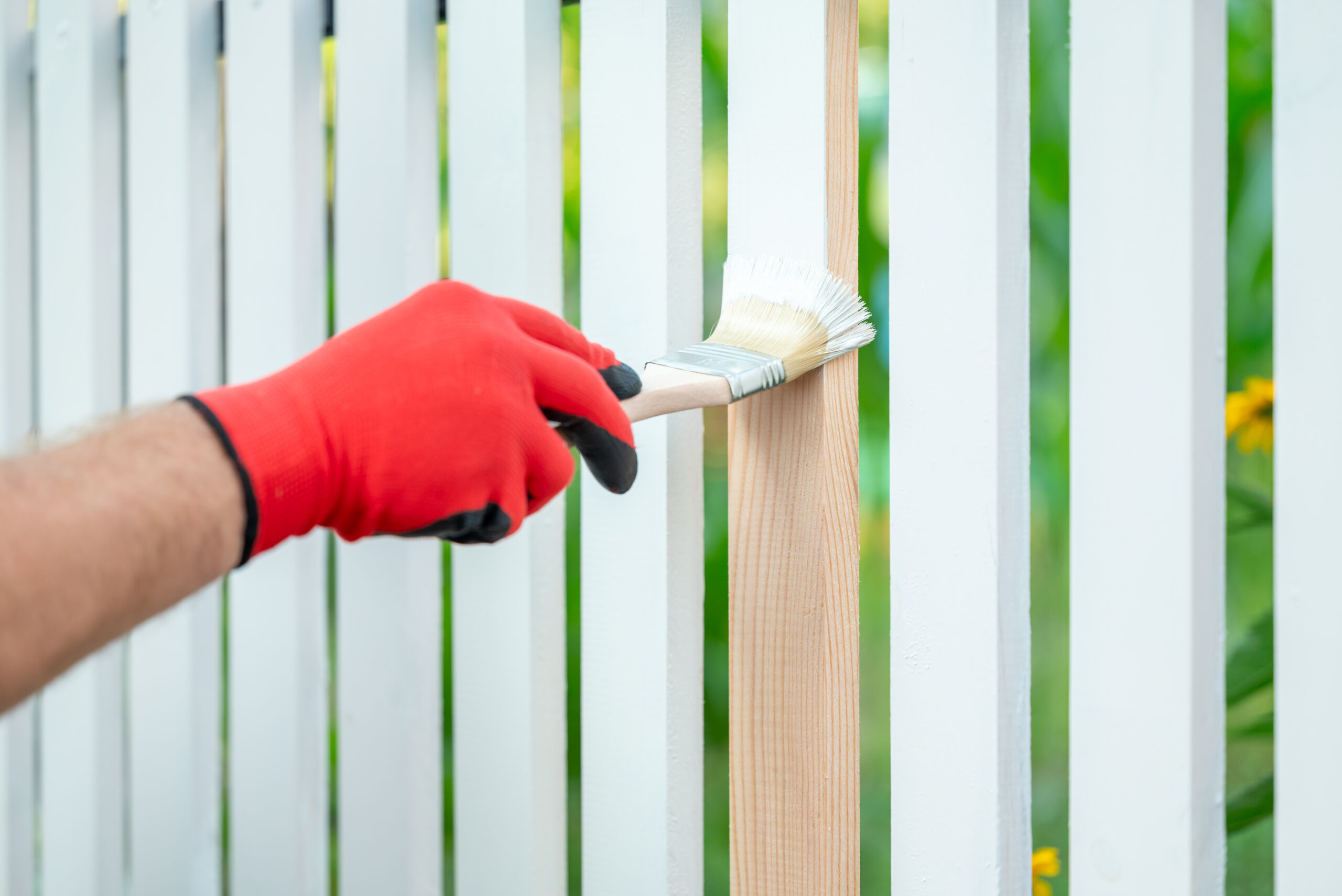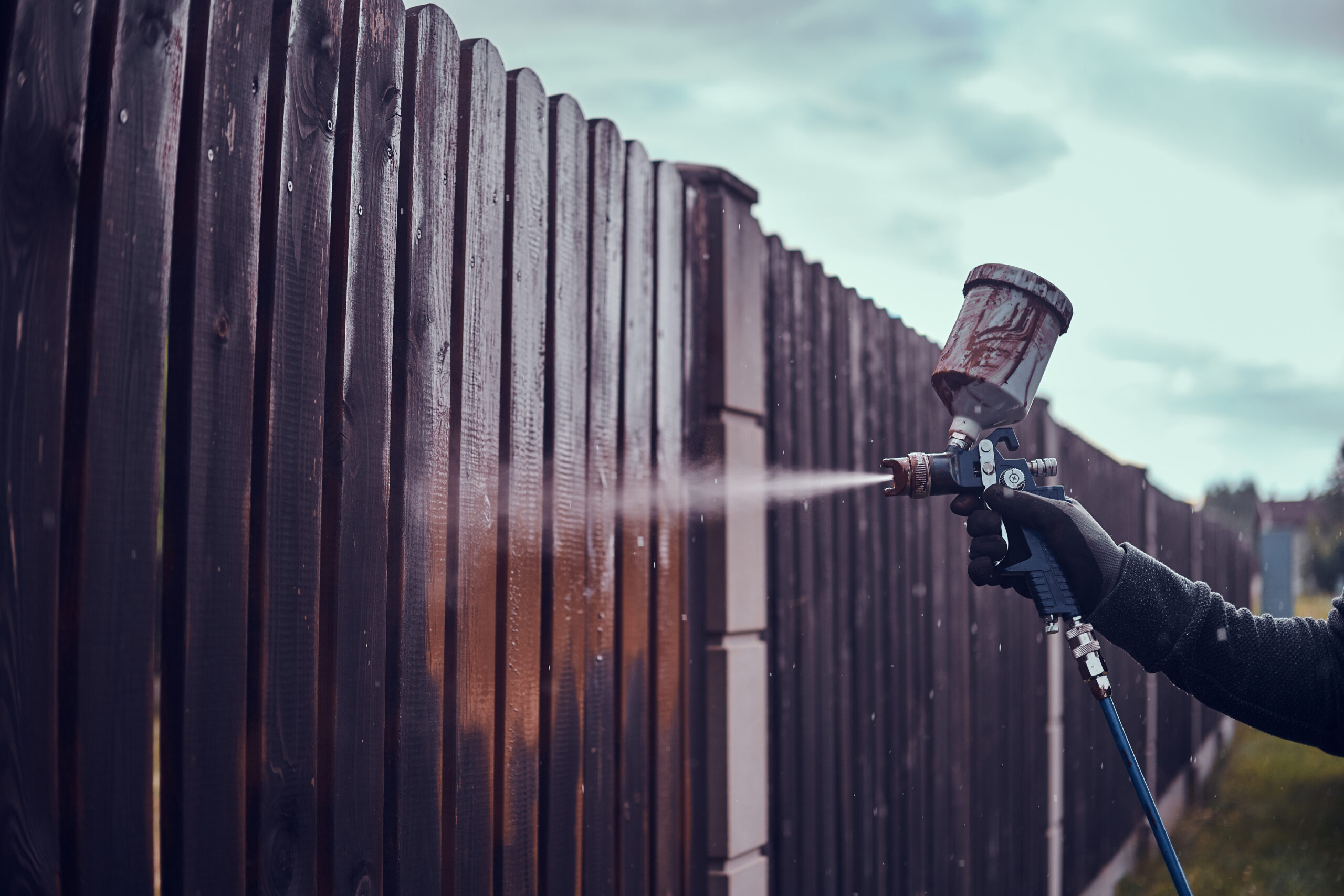A Fresh Look at an Old Question…
Every homeowner with a wood fence has asked the same thing at some point: should I paint or stain my fence? If you live in Snellville, GA, the question carries even more weight thanks to the mix of hot summers, heavy rain, and the occasional freeze.
A fence isn’t just about property lines; it’s also about aesthetics, maintenance, and longevity. Getting this choice right can save you time, money, and frustration in the long run.
I’ve seen fences lose their color after just a couple of seasons and others that look sharp even after years of weather. The difference usually comes down to the type of finish.
Let’s walk through the details so you can make the right call for your home.
Key Takeaways:
- Paint lasts 5–6 years but needs sanding, primer, and more prep work.
- Stain lasts 3–4 years, fades naturally, and is easier to reapply.
- Paint hides wood grain and offers endless color options.
- Stain enhances natural wood grain and resists moisture better in Georgia’s climate.
- Both options cost about the same over time when considering product and maintenance.
How Long Does Each Option Last?
One of the first things people ask is, how often do I need to reapply? Fence maintenance isn’t a one-and-done project.
- Paint usually lasts about 5–6 years before you’ll notice chipping, blistering, or peeling. Once it starts, it spreads quickly, and your fence will need sanding, priming, and repainting.
- Stain typically needs to be redone every 3–4 years. But the wear is different—it fades slowly and often still looks natural even as it ages. Instead of scraping and priming, you’ll mostly need pressure washing and a new coat.
A fence that’s exposed to heavy rain or humidity is going to need more attention. Here in Georgia, mildew and mold grow fast in shaded areas, especially after long stretches of moisture. Using a good wood stain with waterproofing qualities helps slow this down, while paint provides a protective shell.
Appearance and Style Choices
When you think about paint or stain my fence, one of the biggest factors is the look you want.
- Paint gives you endless color choices. Want your fence to match your trim, shutters, or even your favorite brand color palette? Paint lets you do that. It hides the wood grain completely, creating a uniform finish.
- Stain, on the other hand, highlights the natural beauty of the wood grain. Whether you’re working with cedar, pressure-treated lumber, or pine pickets, stain adds richness while keeping the texture visible.
Solid stains can look similar to paint, but they still seep into the wood instead of sitting on top like paint does. Semi-transparent stains allow the natural character of the wood to come through while giving protection against rain, UV rays, and mildew.
Prep Work Before Applying
Here’s where many homeowners underestimate the difference.
- With paint, your fence will need more prep. Rough lumber often has to be smoothed with sandpaper, and a primer coat is a must. Skip these steps, and the paint is likely to blister, peel, or crack sooner than you’d like.
- With stain, the wood absorbs the product, so you don’t have to worry about flaking. The main prep step is cleaning. A sprayer or pressure washing makes a big difference, especially on an older fence that’s collected mold, mildew, or water stains.
For older fences, a brightener or wood cleaner can revive exterior wood before staining. Just like we talked about in our post on tips on pressure washing, cleaning is half the battle in making a finish last.
Weather and Climate
The local climate is a big deal in the paint vs. stain debate. Hot Georgia summers can dry out a fence and make paint brittle. Add heavy rains, and you’ve got moisture pushing against that paint film. That’s when you start seeing bubbles and peeling.
Stain soaks into the fence, which means it expands and contracts naturally with the wood. Oil-based stains in particular are great for resisting water while still letting the wood breathe. If your fence is shaded or surrounded by trees, choose a stain with added protection against mildew and mold.
For newer fences, especially those made with pressure-treated lumber, you’ll need to let the wood dry out first. Applying paint or stain too early traps moisture inside, and that cuts down on the longevity of your finish.
Cost and Maintenance Over Time
A lot of people think paint is cheaper, but the math often balances out.
- Paint usually requires more gallons because you’ll need both a primer and multiple coats of latex or oil paint.
- Stain tends to cost more per gallon, but you often use less, and the application is quicker with a sprayer or brush.
When you factor in how often you’ll need to redo the work, paint and stain usually come out about even. What matters more is how much ongoing maintenance you’re willing to take on. If sanding and scraping don’t sound appealing, stain is the lower-maintenance option.
What Type of Wood Fence Do You Have?
Not all fences handle finishes the same way.
- Cedar doesn’t respond well to paint. It naturally resists rot, but paint can seal in moisture and shorten its life. A high-quality oil or semi-transparent stain is better for cedar.
- Pressure-treated wood can be painted or stained, but it must be fully dry. Stain won’t penetrate deeply until the wood releases its excess water.
- Rough-sawn lumber soaks up stain beautifully but requires a lot of prep for paint. If you want to keep the raw look, go with a natural sealant.
- Picket fences or wooden fences that get a lot of sun exposure often benefit from solid stains to block UV rays.
For decks and fences together, hiring deck painters can help you create a consistent look across your outdoor space. A painted deck and stained fence can clash, but a coordinated finish can tie everything together.
Color Variety and Aesthetics
If you’re the type who wants bold colors—say, a deep navy, bright red, or custom shade—paint is the way to go. Stain comes in plenty of tones, from natural cedar to darker walnut, but it won’t give you that fuchsia fence you might imagine.
That said, stain ages with a lot more grace than paint. A faded stain still shows the natural wood grain and texture, while aging paint can peel and expose raw patches underneath. Think about the aesthetics you want not just on day one, but five years from now.
Application Conditions
Another factor is timing.
- Paint can be applied in more varied weather, as long as it’s not raining.
- Stain needs temperatures above 50°F with no rain forecast for at least 48 hours.
That makes timing your project a little trickier with stain. For fences that need a total refresh, professionals often pressure wash first and schedule staining when the weather aligns. Learn more about different exterior paint types.
Furniture and Other Outdoor Wood
While most people are asking “should I paint or stain my fence,” the same decision applies to outdoor furniture and decking. The same rules about moisture, wear, pigment, solvent, primer, and maintenance apply whether it’s a fence, deck, or patio set. Choosing the right finish keeps everything looking cohesive.
Paint or Stain My Fence: Quick Comparison
| Factor | Paint | Stain |
|---|---|---|
| Longevity | 5–6 years before repainting, prone to peeling or blistering | 3–4 years, fades gradually but rarely peels |
| Appearance | Hides wood grain, unlimited color options | Enhances wood grain, natural look, fewer color choices |
| Prep Work | Requires sanding and primer before painting | Needs cleaning or pressure washing before staining |
| Maintenance | More involved—scraping, sanding, repainting | Easier—clean and reapply stain |
| Climate Suitability | Can crack in hot Georgia summers and peel after rain | Absorbs into wood, resists moisture, adapts to expansion |
Wrapping It Up
When neighbors ask should I paint or stain my fence, the answer always depends on the type of wood, the climate, and how much maintenance you’re comfortable with. Paint offers bold color and a solid shell, but it requires sanding, scraping, and repainting over time. Stain brings out the natural beauty of wood, is easier to reapply, and holds up better to Georgia’s humidity.
If you want the finish to match your deck, calling trusted deck painters in Snellville, GA is the best way to keep everything consistent.
How Oakcliff Painting Helps Homeowners
Here’s how our process makes painting or staining your fence simple:
- Careful inspection of your fence or deck’s condition
- Full cleaning and prep, including pressure washing if needed
- Repairs to damaged areas of the fence before finishing
- Application of primer, paint, or stain with professional-grade tools
- A final walkthrough to make sure every coat looks flawless
If you’re still asking yourself should I paint or stain my fence, let Oakcliff Painting help you find the best option for your property. We proudly serve Snellville, Marietta, Johns Creek, Lawrenceville, GA, and the surrounding areas.
Call us at 770-405-3449 today for a FREE estimate.




